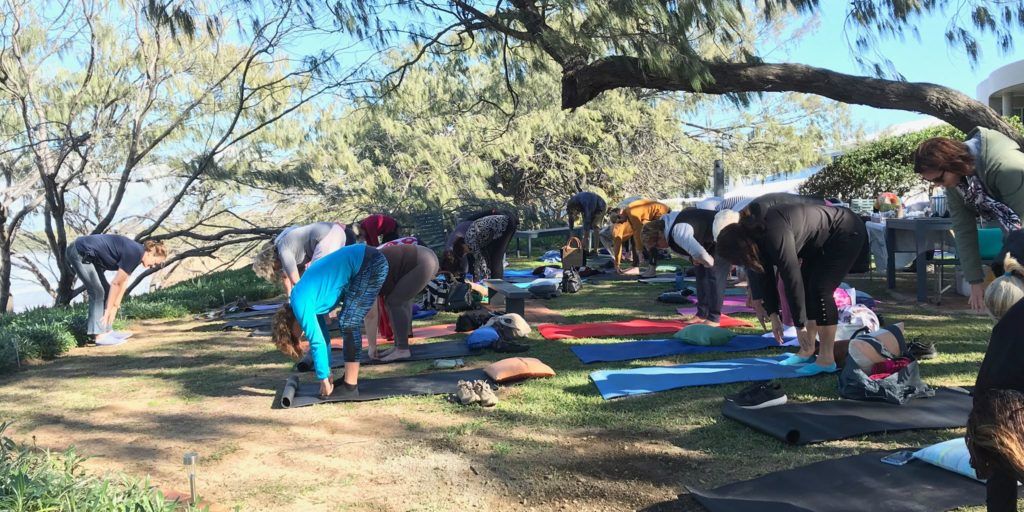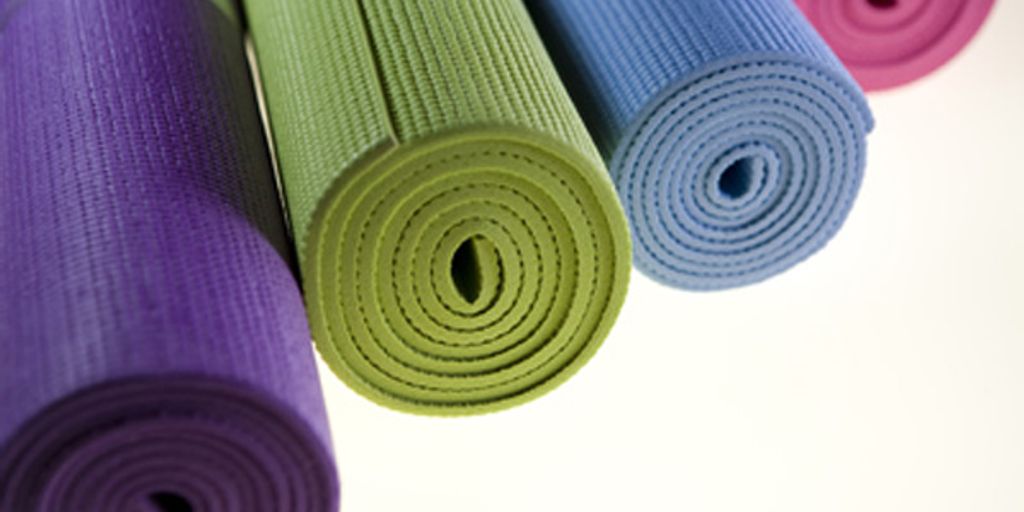
How to Make Your Own DIY Yoga Mat Cleaner: A Step-by-Step Guide
Creating your own DIY yoga mat cleaner is not only an economical choice but also a healthier alternative to store-bought options laden with chemicals. This guide will walk you through the process of making a natural and effective cleaner using simple ingredients. By the end, you'll have a custom solution that keeps your yoga mat fresh and hygienic without harming your skin or the environment.
Key Takeaways
- Understanding the benefits of natural cleaners can motivate you to switch from chemical-based products.
- Gathering the right materials is crucial; essentials include essential oils, a base liquid (water or vinegar), and a spray bottle.
- The process of creating the cleaner involves simple mixing and can be adjusted for scent and antibacterial strength.
- Regular cleaning using the DIY solution helps maintain the mat's grip and hygiene, enhancing your yoga practice.
- Customizing the cleaner for personal preferences or sensitivities can make your yoga experience more enjoyable and safe.
Understanding the Need for a DIY Yoga Mat Cleaner
Benefits of Regular Cleaning
Regular cleaning of your yoga mat not only maintains its appearance but also enhances its performance and longevity. Maintain hygiene and performance with a DIY cleaner that is easy to make and effective.
Risks of Chemical Cleaners
Many commercial cleaners contain harsh chemicals that can degrade the material of your yoga mat and may cause skin irritation. Opting for a DIY solution allows you to control the ingredients and avoid these risks.
Importance of Natural Ingredients
Using natural ingredients in your DIY yoga mat cleaner is crucial for safety and effectiveness. Ingredients like vinegar and essential oils not only clean but also disinfect naturally, making them ideal for regular use without the health risks associated with synthetic chemicals.
Gathering Your Materials
Essential Oils for Fragrance and Disinfection
Selecting the right essential oils is crucial for both the fragrance and disinfecting properties of your DIY yoga mat cleaner. Popular choices include tea tree, lavender, and eucalyptus, each known for their natural antibacterial and antifungal properties. Mix a few drops of your chosen oil with the base solution to create a cleaner that not only smells good but also effectively sanitizes your mat.
Choosing the Right Base: Water vs. Vinegar
The base of your yoga mat cleaner can either be water or vinegar. Water is gentle and effective for regular cleaning, while vinegar offers a deeper clean with its natural disinfecting qualities. For a balanced cleaner, you might consider a mixture of both. Here's a simple comparison:
| Base Type | Properties | Recommended Use |
|---|---|---|
| Water | Gentle, non-irritating | Regular cleaning |
| Vinegar | Natural disinfectant | Deep cleaning sessions |
Additional Tools: Spray Bottle and Cloth
Finally, you'll need a spray bottle for easy application and a soft cloth for wiping the mat. Ensure the spray bottle can produce a fine mist to evenly distribute the cleaner across the surface of the mat. The cloth should be soft enough to not scratch the mat but robust enough to effectively remove dirt and moisture.
Creating Your DIY Yoga Mat Cleaner Solution
Mixing the Ingredients
Begin by gathering all your chosen ingredients on a clean workspace. Pour the base liquid, either distilled water or vinegar, into a bowl. Add 10-15 drops of your preferred essential oils. If using witch hazel for its disinfecting properties, include about a quarter cup. Stir the mixture gently to ensure all components are well combined.
Adjusting the Scent and Strength
To customize the scent, experiment with different combinations of essential oils. Lavender and tea tree oil are popular for their pleasant fragrance and antibacterial properties. Adjust the strength of your cleaner by varying the amount of essential oils. More drops will result in a stronger solution, which might be preferable for mats that see heavy use or have developed odors.
Storage Tips for Longevity
Store your homemade yoga mat cleaner in a dark, cool place to preserve its efficacy. Use a glass spray bottle to avoid chemical reactions that can occur with plastic. Ensure the bottle is tightly sealed to prevent evaporation. For best results, shake the bottle before each use to remix the ingredients.
Step-by-Step Cleaning Process
Pre-Cleaning Preparation
Before applying any cleaner, ensure your yoga mat is free of any loose dirt or debris. A simple shake or a quick sweep can do the trick. This step is crucial to avoid scratching the mat surface during the cleaning process.
Applying the Cleaner
Spray the DIY cleaner lightly across the surface of the yoga mat, ensuring even coverage. Use a clean cloth to gently wipe the mat, allowing the natural ingredients to lift dirt and eliminate bacteria.
Drying and Aeration
After cleaning, it's important to let your yoga mat dry completely. Hang it in a well-ventilated area or outdoors if the weather permits. Avoid direct sunlight to prevent the material from degrading. Proper aeration helps in maintaining the mat's integrity and freshness.
Maintaining Your Yoga Mat Post-Cleaning
Routine Maintenance Tips
To ensure your yoga mat remains in top condition, regular maintenance is crucial. Wipe down your mat after each use to remove dirt and sweat. Store it in a cool, dry place, and avoid prolonged exposure to direct sunlight which can degrade the material.
Addressing Stains and Odors
If stains or odors persist, consider a deeper clean with a mild soap solution. For tough stains, a soft brush can be used gently to avoid damaging the mat's surface. Ensure the mat is thoroughly rinsed and dried afterwards.
When to Replace Your Yoga Mat
Over time, your yoga mat will show signs of wear and tear. It's important to replace your mat when it begins to degrade, as a worn-out mat can compromise your safety during practice. Look for signs like thinning, tearing, or loss of grip. Replacing your mat periodically ensures a safe and effective workout.
Customizing Your DIY Yoga Mat Cleaner
Incorporating Different Scents
Experimenting with various essential oils allows you to personalize the fragrance of your yoga mat cleaner. Popular choices include lavender for relaxation, peppermint for invigoration, and tea tree for its antimicrobial properties. Mix and match scents to create a signature blend that enhances your yoga experience.
Adjusting for Sensitive Skin
If you have sensitive skin, it's crucial to choose ingredients that are gentle yet effective. Opt for hypoallergenic essential oils and dilute your solution appropriately to avoid skin irritation. Conduct a patch test on a small area of the mat before applying the cleaner fully to ensure it's safe for your skin type.
Eco-Friendly Additions
Enhance the sustainability of your cleaner by choosing eco-friendly additives. Ingredients like biodegradable soap or organic essential oils minimize environmental impact. Consider using a reusable glass spray bottle and a washable cloth to further reduce waste.
Properly clean and maintain your yoga mat with natural solutions like vinegar, lemon juice, and baking soda. Dry and store your mat to extend its lifespan.
Elevate your yoga practice with our DIY Yoga Mat Cleaner guide on Yune Yoga! Discover the best ways to keep your mat fresh and clean using natural ingredients. For more detailed instructions and additional yoga essentials, visit our website today!
Conclusion
Creating your own DIY yoga mat cleaner is not only a cost-effective solution but also a great way to ensure you're using natural and safe ingredients. By following the step-by-step guide provided, you can easily mix your own cleaner and maintain the hygiene of your yoga mat. This simple DIY project not only keeps your mat fresh and clean but also extends its life, ensuring you can continue your yoga practice in a clean and healthy environment. Remember, a clean mat is integral to a focused and enjoyable yoga experience.
Frequently Asked Questions
Why should I make my own yoga mat cleaner?
Making your own yoga mat cleaner allows you to avoid harsh chemicals, customize the scent and ingredients according to your preferences, and ensure the cleaner is eco-friendly and gentle on your yoga mat.
What are the benefits of using essential oils in my yoga mat cleaner?
Essential oils add a pleasant fragrance and can have natural antibacterial and antifungal properties, helping to disinfect and deodorize the yoga mat effectively.
Can I use vinegar as a base for my yoga mat cleaner? What are the benefits?
Yes, vinegar can be used as a base for your yoga mat cleaner. It is a natural disinfectant and deodorizer, making it effective in removing odors and killing bacteria.
How often should I clean my yoga mat?
It is recommended to clean your yoga mat after each intense session or at least once a week to maintain its cleanliness and prevent the buildup of bacteria and odors.
How do I store my DIY yoga mat cleaner to ensure it lasts long?
Store your DIY yoga mat cleaner in a cool, dark place in a well-sealed container or spray bottle to preserve its efficacy and prevent degradation of the ingredients.
What should I do if my yoga mat continues to have a bad odor even after cleaning?
If odors persist, consider increasing the strength of the disinfecting ingredients in your cleaner, or use a specialized enzyme cleaner designed to break down odors. If the problem continues, it may be time to replace your yoga mat.


